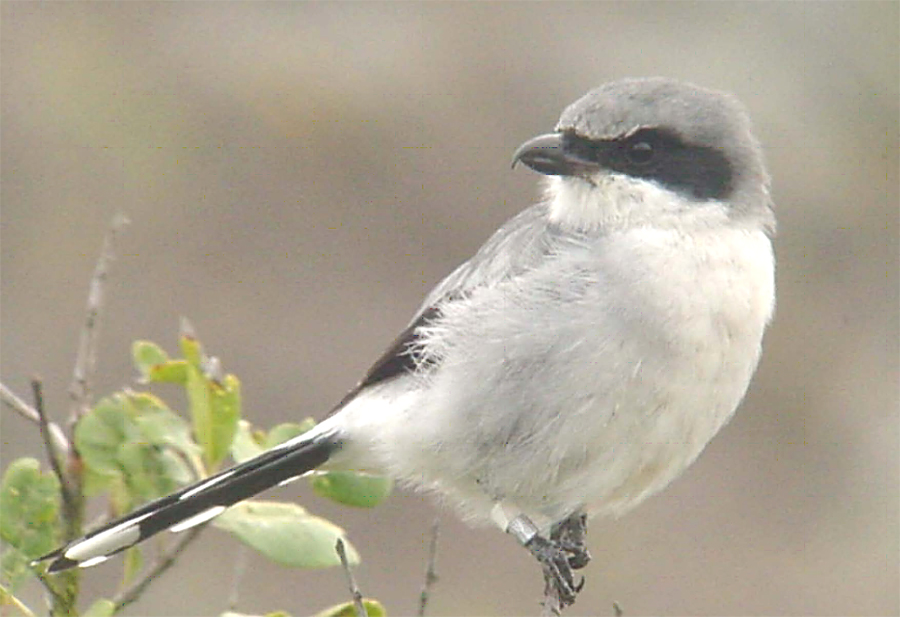
STATUS
Federal status: Endangered
POPULATION TREND
(+) Increasing
RESTORATION
Difficult
FAMILY
Laniidae, derived from the Latin word for “butcher”
RANGE
Endemic to San Clemente Island
Appearance
A medium-size shrike with upright posture, a black “mask”, and hooked bill. It has patches of white on its wings and tail.
Habitat & Behavior
On San Clemente Island, this species has been found both in woodland and maritime desert scrub habitat. It nests in a diversity of trees and shrubs, as well as buildings. It is a predatory perching bird that hunts for insects, lizards, and mice.
Threats
Much of the original vegetation on San Clemente Island was lost due to the introduction of non-native plant and animal species. Sheep and cattle ranching in the late 19th to the early 20th centuries significantly altered the original vegetation, and feral cats and black rats further reduced shrike numbers. The island population reached an all-time low of 14 individuals in 1998.
Conservation
The removal of non-native grazers from the island has allowed for the regrowth of native shrubs and trees, which will provide nesting habitat for the shrikes. The U.S. Navy, Zoological Society of San Diego, and the Institute for Wildlife Studies also implemented a captive breeding program in 1991. The population has rebounded slightly to 206 individuals.
Where can you spot it?
This species is endemic to San Clemente Island.
References:
- San Clemente Loggerhead Shrike (Lanius ludovicianus mearnsi) 5-Year Review: Summary and Evaluation. 2009. U.S. Fish and Wildlife Service, Carlsbad Fish and Wildlife Office, Carlsbad, CA. [link]